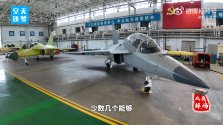But despite similarities to the Mulberry bridges, this design of bridge barge will likely be deployed in a different way and have different safety requirements for their deployment.
What similarity does this have to the Mulberry system? The similarity is that they are both ship-to-shore connectors using roadways ... and there all similarities end.
Mulberry didn't use elevated roadway "bridges". It used floating pontoon roadways.
The PLAN system, as can be seen, utilises elevated roadways, thereby bypassing much of the onerous harbour construction requirements of the Mulberry system.
The Mulberries were more modular and had more numerous types of component sub-vessels. The Mulberries had at their head specially designed beaching craft, so-called "gooseberries" that were relatively cheap and simple yet ruggedly made (thus if one failed others could take their place), followed by a series of other special-purpose craft behind farther to sea.
The so called modularity is primarily for construction of a function - a miniature harbour to sustain a floating roadway (the floating roadway requires calm waters to function) connecting to an offshore pier for vessels (primarily LSTs) to unload onto.
None of these so called "specially designed beaching crafts" or Gooseberries served any purpose in moving logistics. They were simply there to serve as breakwaters to form the calm harbour-like conditions required for the floating roadway.
Despite the modularity, the Mulberry system was quite fragile. As can be seen by the American Mulberry being wrecked by the storm of 19-21 June. It is also highly probable that the PLAN system will be more survivable against similar weather conditions as well as being operational in higher sea states than the Mulberry system was.
In contrast, new variants are all seemingly roughly of similar design, just at different scale, and all very sophisticated. Their relative complexity and high cost may actually be a vulnerability, insofar as they are likely going to be too expensive to risk getting close to shore until the land, sea, and air environments around the beaches completely clear.
Again, there is nothing roughly similar between;
Mulberry system - a floating pier for unloading connected to the beach via a floating roadway running within an artificial "harbour".
PLAN landing barges - a series of jacked platforms forming an elevated roadway linking ship to shore thereby isolating operations from the sea state below.
For instance, the first sub-components of the Mulberries were beached within hours of the attack, and it is debatable whether beaches can be cleared nearly so quickly in a Cross-straits scenario for these kind of ships.
This is the biggest gross misconception.
Elements of Mulberry construction started on D+1 BUT it took till D+10 for the first Mulberry A roadway on Omaha beach to accept the very first vehicle unloaded from the Lobnitz piers on the seaward end of the Mulberry system.
Prior to D+9, LSTs had to beach directly to maintain supply for the landed forces as opposed to docking onto the Mulberry Lobnitz piers.
That single roadway operational on Mulberry A (out of 3 planned roadways) effectively doubled the daily supply tonnage landed on Omaha.
Note - On the D-Day timeline, planned operational use of the Mulberry harbour was for D+12.
For those not too familiar, the planned backbone of the cross channel D-Day supply chain was the LSTs. ~100m long with 2k tons of cargo capacity each. They could beach directly and offload via the bow ramps but the cycle for that method of operation is slow and limited. The problem with beaching directly is the unload cycle time - approximately 12 hours from beaching, waiting for tide to recede, unload, wait for tide to come in, refloat and unbeach to sail back to UK ports for next round of cargo.
The Mulberry piers shortened this dramatically to just 1+ hour. Time saved on unloading means faster cycles means less LSTs required to maintain the required supply throughput ... and the landing forces barely had enough LSTs for requirements as it was. Mulberry was crucial for the operational planning to go ahead with D-Day without first (or very quickly) capturing a port for supply purposes.
Further, the types of equipment these jackup vessels will have to be on guard against are much more sophisticated and more deadly than anything the Mulberry designs had to deal with, from manpads to loitering munitions and undersea explosives, etc., the range of threats is just much greater. If I were an enemy combatant, those jackup legs would certainly be an attractive target!
This is where my inner engineer says, "sometimes simpler is better."
Both systems are static and are therefore equally vulnerable.
Any system capable of targeting individual jack up legs will be equally capable of targeting the various subcomponents vital to any system.
Last edited:









